A Russian guided missile cruiser has carried out live-fire exercises just 30 kilometres from the Norwegian border.
The Marshal Ustinov, a Slava-class cruiser assigned to the Russian Northern Fleet, conducted artillery strikes and simulated combat drills on the Rybachii Peninsula, near the Barents Sea.
The drills, announced by the Russian Ministry of Defence, included live firing of the ship’s twin-barrelled AK-130 main gun at coastal targets, simulated missile engagements, and gunnery exercises against mock uncrewed surface vessels. Russian officials claimed all targets were successfully struck. The warship is also expected to conduct further anti-submarine, anti-aircraft, and anti-drone training in the coming days.
The Rybachii Peninsula lies less than 20 kilometres from Norway’s maritime boundary. The proximity of the exercise has drawn attention from defence analysts and regional observers, especially as it coincides with an uptick in Russian grey zone activity in northern Europe.
This is the second time in a month that the Marshal Ustinov has conducted exercises in the Barents Sea. In early March, the cruiser took part in drills involving artillery, missiles, and torpedo systems. The vessel, which measures 186 metres in length and displaces over 12,000 tonnes at full load, is armed with long-range S-300F Fort surface-to-air missiles, 16 P-1000 Vulkan anti-ship missiles, and a range of anti-submarine weapons including RBU-6000 rocket launchers and torpedoes.
The Marshal Ustinov also carries a helicopter and is equipped with advanced radar and sonar systems, making it one of the more capable surface ships in Russia’s Northern Fleet. It is based in Severomorsk and forms part of Russia’s standing presence in the Arctic region.
The timing of the exercise, during the Holy Week holiday period, has added to concerns in Oslo and elsewhere. Norway has repeatedly warned of increased Russian military activity near its northern waters, particularly since the full-scale invasion of Ukraine. NATO’s recent strategic documents have highlighted the vulnerability of Arctic and North Atlantic shipping routes, undersea cables, and infrastructure to Russian disruption efforts.


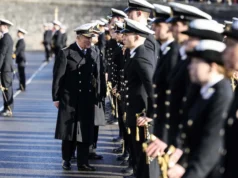

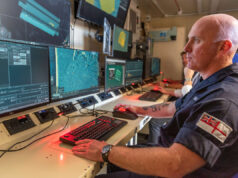
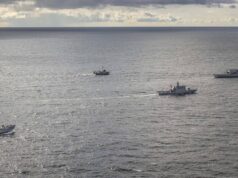
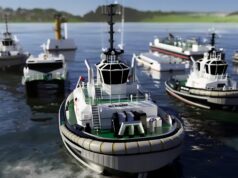
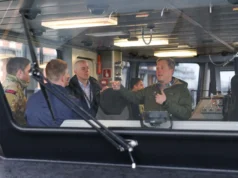
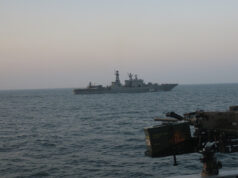
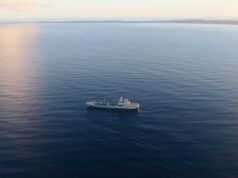
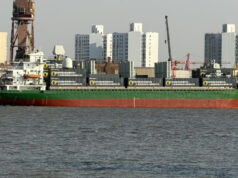
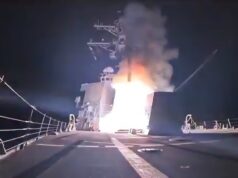

Hmm, first time in awhile that I have seen ‘shipping routes’ mentioned in the press. Well done UKDJ…
NATO / eNATO surface escort fleet is wholly in adequate to deal with a major CRINK Axis effort to cut the North Atlantic trade routes. Yes I know that the idea is to pin them back north of the Greenland, Iceland, UK (GIUK) Gap, but that is all very well in principle but the best laid plans never survive contact with the enemy.
There are two issues to consider. While the Russian fleet is clearly in a poor state (the SLAVA class are Soviet era ships, so pretty old). The Russians are part of the CRINK Axis and China’s fleet is anything but old. Furthermore, China’s technology is closing in on the West’s as evidenced by the performance of the aircraft against Indian Air Force Rafales in the recent confrontation with Pakistan. So it is not inconceivable that China will help Russia improve its kit and or actively support them in a confrontation with NATO, especially if it draws USN units away from the Pacific and Taiwan…
It also takes about 5 to 10 years for the west to build a frigate these days so rebuilding our escort fleet is going to take quite sometime, time we may not have unless we really get on with it. The UK is building up momentum in this regard so stopping at 5x T31, and 8x T26 would be stupid in the extreme and mooning about the recruiting problem when we know there are huge delays in getting people through the system is dodging the issue – sort the b****y system out before wining about the yuth of today (me / our generation was viewed similarly back in the day and they stood firm in the Falklands and Gulf War One).
As the Parliamentary Defence Committee pointed out:- We need a bigger navy. One that can fight the Third Battle of the Atlantic and win. Otherwise, deterrence will fail..!
One day one of these gray zone actions will go way over the top either deliberately or by accident and the poop will hit the fan in a big way. The threat / risk profile is getting very ugly indeed.
Cheers CR
It’s a bit of a stretch to say all of the countries of the West need 5-10 years for frigates, the FREMMs and FDIs have been cracking on for example with the new Italian EVO model just having her keel laid. Add in Japan and ROK build rates and it’s much less than 5-10 years.
The USN seems to be making every mistake imaginable, while the stretch for the RN is mainly Treasury/No 10 related.
With the presence of these type of ships in around Norway you can understand the 4×4 NSM load out of NSMs on the proposed Norwegian T26. Something the RN can do prior to FCASW or even with it. T45 probably has the space for 4×4 as does the T31. Just got to get on ordering it. With so few subs available a bit of visible ashms shows what you’ve got.
Amazingly the Marshal Ustinov was able to carry out this live fire and not sink itself in the process.
“Just another target” if it ever leaves the comparative safety of the Barents and Kara seas in a hot war.
And even then SSN would probably sink it.
This ship needed sinking. Blatant attempts like this by Putin to bully NATO members should only attract one response
Not a threat really- the SLAVA class cruisers can be sunk by a couple of harpoons or equivalents. Don’t believe me? just ask the RFS Moskva.- these ships are a liability and a danger to their crews.
Yep, I was surprised at what Ukraine did with only 2 Neptune missiles. In theory, they are harpoon size, so you would expect it would take more than 2 to sink a 12,000 ton ship. I assume at least one of the Neptunes hit the Moskva’s Vulkan (possibly P-700 Granit) missiles, which caused a chain of ammo detonations.
We can speculate forever, but another assumption is that UKR used drone swarms to distract the Moskva’s AAW defences while the Neptunes snuck in.
Looking at the images of the Moskva after the strike, when they tried to tow it back to Crimea, showed only one noticeable hole above the water line. The forward P1000s canisters looked intact. But there was a lot of evidence of an uncontrolled fire within the ship. But as soon as the ship was under tow it began to list. So I presume the second Neptune must have hit on or below the water line causing flooding.
What was perhaps telling is that the “Top Dome” tracking radar, used for the S300 tracking was still in its parked position. But more importantly so were the OSA-M short range missile systems, that would be expected to counter the Ukrainian Neptunes or drones. Both systems either side of the hanger were still “parked” within their silos.
There have been a few reports stating Moskva was in a poor material state and a number of systems weren’t fully operational. If this was the case with its air defence systems, then Moskva should never been expected to provide a fleet air defence, as it couldn’t protect itself. Though not forgetting that the Russian Forces in general in the first year of the war were making some serious errors of judgement on their capabilities.
Just aft of the P1000’s are twin AK630 mounted on a box like structure. Unlike the Phalanx where the ammunition is within the weapon itself, the AK630’s ammo is fed from below, said box structure, which took a direct hit from a harpoonski.
The Rybachii Peninsula gets loads of 5* reviews on Google Maps. Great scenery and fishing apparently. Got to keep a look out for the odd artillery bombardment of course.
I am curious how Russia keeps these old ships in service. She was launched in 1982 (commissioned in 1986)
In comparison, HMS Lancaster was commissioned in 1992, but is now in such poor condition that she will be decommissioned/scrapped later this year
Look at RFA Argus. It was an Italian build container ship. 1981
It must have been bloody well built. Credit to the Italian’s. Maybe the UK should have ordered a second one at the time?
It’s relative really. The RN seems committed to adhering to Lloyds certification standards and ensuring vessels meet stringent safety and other criteria. The Russian navy doesn’t give a shit about any of that and continues to send out barely seaworthy armed barges with no concerns for crew welfare or safety.
Indeed, worryingly taking the RN down to a frankly ludicrous 7 active frigates, with three launched and fitting out and another 2 close to launch before years end but then requiring fitting out. I’m very, very surprised that the proposed escort fleet declared in SDSR hasn’t been met with firm orders- 6 more warships are required to get to 25- more than that if the 25 is really the minimum insinuated within SDSR.
There is space within the type 26 programme to squeeze out another 2-3 before production switches to type 83 destroyer programme- the first 6 of which need to be built quickly and then after that production at a rate of one every 24 months until we get to the required 10+ destroyers actually needed especially if the destroyer fleet is going to offer a rudimentary BMD for the UK mainland. Then another 4 type 31s but perhaps fitted with and armed with mk41 vls from launch.
Its not really speculation on the day of the sinking before it all got pulled off the internet there were postings from Russian naval vessels nearby on social media showing the extent of the fires- they were catastrophic and lead to complete structural failure. The only explanation is the P1000 Vulcan missiles in their unarmoured silos and without fire suppression systems around them cooked off leading to the sinking.
The Russian navy adopts a disposable element to all their military equipment even including cruiser sized flagships. They try to pack the maximum amount of weaponry onto every conceivable piece of deck space and then hope to overwhelm the enemy in sheer numbers (of missiles in this case) similar concept and philosophy to their tanks. the end result is they awesome in appearance and deadly when firing but are death traps to their crews and have glass jaws.